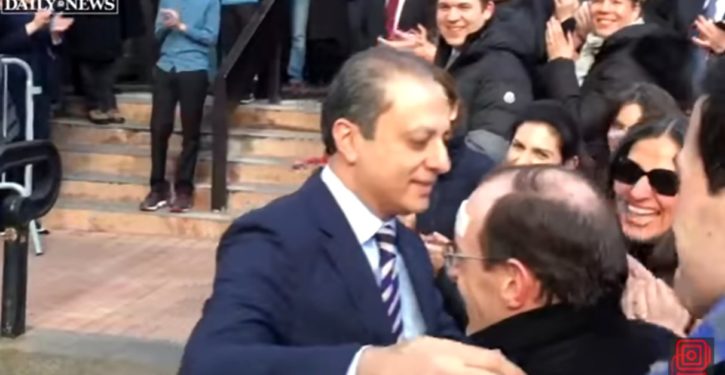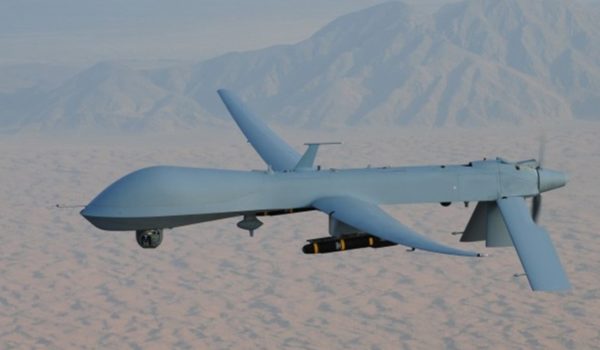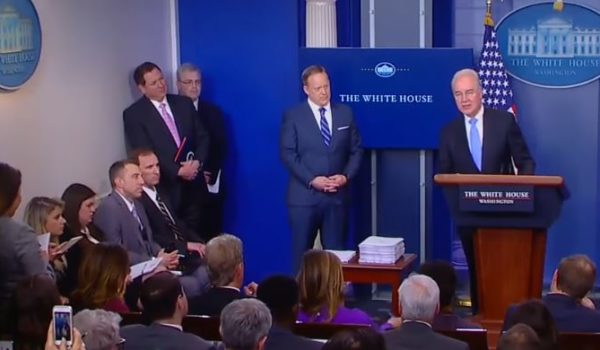
Fantastic tales are being spun over the fact that when U.S. Attorney Preet Bharara was asked by Donald Trump to resign – as is common with new presidents and district attorneys – Bharara refused to resign, and Trump had to fire him.
He was one of 46 attorneys asked to resign, so it’s absurd to suggest that Trump had it in for Bharara, in particular. Bharara has been the U.S. Attorney for the Southern District of New York (SDNY), which includes Manhattan, since 2009, and we can assume Trump is quite familiar with who he is, and has an opinion of him. But that’s the case for all presidents and some number of the district attorneys whose resignations they ask for. There’s nothing nefarious about it.
If Bharara is a highly effective prosecutor whose approach and methods Trump appreciates, Trump can reappoint him, either to the SDNY job or to something else.
Would Trump want to? That is an interesting question. Maybe. (See the final point, below.) Bharara doesn’t seem out of the mainstream to me, and he has a good reputation overall. But there are some things to know about Bharara’s record that you wouldn’t pick up on from the positive – not to say hagiographic – picture painted of him by the political media.
He’s been depicted as a crusader against corrupt politicians and big banks, because he nailed some New York State officials and obtained big judgments against financial institutions. But he also appears to be selectively vindictive against defendants on lesser stages.
And he has been perfectly aligned with a growing trend in which federal law enforcement basically shakes down big banks (or other deep-pocketed companies) every now and then, and puts them under agency supervision, but doesn’t pursue criminal prosecutions or other remedies under U.S. law.
That latter point ought to make you stop and think. A string of banks that cough up billions of dollars in fines every few years, but then get to keep operating under government supervision, with most of the bigwigs keeping their jobs – not to mention staying out of jail – is a wonderful pet to have. It’s also a moral hazard deeper than the Marianas Trench.
Crusading against Big Finance
Starting with the bank judgments, it’s worth noting that one of Bharara’s most notorious victories, a $1.3 billion judgment against Bank of America in 2014, was later voided by a federal appeals court in 2016, because the “trial evidence fail[ed] to demonstrate the contemporaneous fraudulent intent necessary to prove a scheme to defraud.” An interesting outcome for a fraud case, and one that may raise questions about the trial judge as well as the prosecutor.
But the bigger news about the judgment against Bank of America is that it was simultaneous with a $16.65 billion “deferred prosecution agreement” reached by the Obama Justice Department and the SDNY. The DPA required Bank of America to fork over the fine, in exchange for being “supervised” instead of its officials being criminally prosecuted – or internal restructuring or other measures being ordered by a judge.
The bank officials are still subject to civil prosecution (e.g., lawsuits from unhappy account-holders). But unless the federal “supervisors” demand a scalp or two, the officials will keep their positions, and fight their civil suits with big compensation packages and retainered lawyers at their disposal.
The bigger issue, however, is how the DPA keeps the disposal of the banks’ structures and assets out of the hands of judges acting strictly according to federal law. This issue doesn’t get much play; critics complain mostly about the bank officials skating on criminal charges.
But keeping the crime itself away from the courts is the real moral hazard here. The opportunity the federal executive has with a deferred prosecution agreement isn’t rigorously subject to independent oversight. The Manhattan Institute summarized it this way in 2012:
Once under a DPA or an NPA, company leadership has little ability to object to prosecutorial demands: the agreements typically state that determinations as to whether a company is in breach are the prosecutor’s alone and are beyond judicial review. …
The process whereby federal prosecutors enter into DPAs and NPAs lacks transparency and judicial oversight…
Whether you’re a Democrat or a Republican, you can probably see why you wouldn’t necessarily trust federal appointees of the other party (or, if you’re a stickler, of your own) to administer this situation with perfect good faith. The practice itself is too inherently corruptible. Trace it long enough, in some cases, and it starts looking like what prosecutors consider evidence of RICO crime – if you and I are doing it.
It got its start as a way of allowing internally weak banks, or other companies, to remain in business so as not to put employees out of work. See the Manhattan Institute link above. But the danger of the practice for the federal government’s relations with the people far outweighs that consideration. DPAs turn the U.S. Department of Justice quite explicitly into a shakedown squad.
In one of the most famous examples, involving the Eastern District of New York (and then-U.S. Attorney Loretta Lynch), banking giant HSBC paid $1.9 billion in fines and accepted a DPA with the DOJ in December 2012. In the years since, HSBC has worked diligently on its DPA compliance by making former federal officials executives of the company (including a top official from Treasury), and hiring consultants under mandate from the government, a practice fraught with its own ethical dangers.
Perhaps the highest-profile official to participate in this compliance regimen was current FBI Director James Comey, who came from a DOJ job, was a prior veteran of the SDNY, and in 2013 was named to the HSBC board of directors. Comey was appointed to the “Financial System Vulnerabilities Committee,” a panel HSBC established in January 2013 as part of its compliance measures under the December 2012 DPA.
What was the underlying crime for which HSBC had to make the DPA? Money-laundering: for Al-Qaeda terrorists, Iran’s sanctions-related entities, and international drug cartels.
And did the DPA work to curb HSBC’s extensive pattern of systematic money-laundering? The short answer is no. We’re past the four-year mark today, and according to the federal monitor, as of April 2016 – nearly a year ago – HSBC hadn’t made the headway he would like to see in improving its compliance.
For any sensible person, that’s a Whiskey Tango Foxtrot moment. Why exactly would it take more than, say, a month, at the most, to be sure the bank was no longer laundering money for Iran or the cartels?
But apparently it has taken longer, because in 2016, the monitor flagged a number of suspicious transactions through HSBC that suggested the bank was still unable to get its money-laundering under control. (British media, with no investment in the reputation of U.S. regulators, put even less of a courteous spin on it in their reporting – which also highlighted continued money-laundering for UK-linked entities.)
So this DPA thing isn’t always working out so well, and apparently can go on that way for years at a time. That’s the picture you want to have in your mind when you see that Preet Bharara got France’s BNP Paribas to pay a hefty $8.9 billion fine for money-laundering for Iran and Cuba, among others.
BNPP didn’t even have to submit to a DPA. It got a non-prosecution agreement (NPA) from DOJ with its guilty plea, and its remediation measures are described as follows:
Pursuant to the plea agreement, BNPP has agreed to adhere to best practices for international banking transparency, implement procedures and training designed to ensure U.S. sanctions compliance, and pay nearly $8.9 billion in criminal penalties and forfeiture.
That’ll certainly fix their wagon. And as a reporter for the Guardian pointed out, $8.9 billion is less than a third of the $30 billion in illegal transactions BNPP was complicit in. The judgments sound big, until you see the monetary size of the crimes.
Incidentally, there is documented incentive for well-equipped jurisdictions (like SDNY and EDNY) to keep operating this whole process as a shakedown. New York’s Finest got $160 million in communications gear last year, courtesy of the fines paid by HSBC, BNP Paribas, and a third international bank, Standard Chartered. Making money for government coffers off of DPAs and NPAs is a very big enterprise.
Bharara has other scalps on his belt, and should not be judged solely on the basis of the cases settled by DPA or NPA. But when some of the highest-profile and most-lucrative cases are in the latter categories, it is wise to temper the rejoicing. At the very least, arranging big fines and federal supervision doesn’t mean the money-laundering stops.
Another standard for smaller targets
Contrast the SDNY treatment of BNPP and Bank of America with Bharara’s pursuit of a relatively small-time con artist, Hassan Nemazee. Nemazee’s was a strange case of defrauding Bank of America, Citibank, and HSBC out of $292 million by setting up fake shell companies and borrowing against their nonexistent “assets.”
Nemazee certainly shouldn’t have done that, and he no doubt deserved the 12-year prison sentence he got in 2010 for his fraudulent actions. (Oddly enough, Nemazee was a major donation bundler for both Barack Obama and Hillary Clinton, among other top Democrats, and was Hillary’s national finance chairman in 2008. Apparently, he donated thousands from his fraudulently-obtained funds to Democratic campaigns.)
But the zeal with which he was pursued makes an interesting contrast to the hands-off approach with the executives and culpable employees of banks laundering billions of dollars for bloodthirsty terrorists, cartel lords, and the terror-sponsoring governments of Iran, Sudan, and Cuba.
Bharara was also the lead prosecutor for the case of David Ganek, a hedge-fund manager who was basically made an example of in 2010 – his office raided in a high-profile action with local news crews present – and forced to liquidate his business due to the bad press and loss of reputation. But Ganek was never charged with anything, and it became clear later that a key element of evidence in the FBI affidavit for the raid was a false accusation – which the supposed accuser himself said he never made.
Ganek sued afterward, and a judge in 2016 rejected DOJ’s request to dismiss the lawsuit, instead allowing it to go forward. As chronicler Dinesh D’Souza notes, that is relatively rare. Judges usually side with the government in such matters.
(For full disclosure, I note that D’Souza himself was prosecuted by Preet Bharara for illegal campaign donations, to which D’Souza pled guilty in 2014. D’Souza has always thought he was unfairly targeted for a comparatively minor offense, one that typically draws no interest from a busy federal prosecutor; attorney Alan Dershowitz, not exactly a political sympathizer with D’Souza, basically agreed. Bharara wanted D’Souza to serve 16 months in federal prison for routing $15,000 in donations to a New York candidate through cut-outs – which objectively was indeed overkill – but the judge agreed to the more sensible sentence of community service and probation.)
Why did Trump ask for Bharara’s resignation?
Unless you just pay attention to these things, you probably don’t know that Bharara actually met with Trump in early December and reportedly agreed to stay on as U.S. Attorney for the SDNY. Business media speculated at the time that Trump approved of Bharara’s investigations into NYC Mayor Bill de Blasio, and the probability that he would “keep pressure on” New York Governor Andrew Cuomo.
It does seem odd that this early signal was so categorically positive about Bharara keeping his job. Apparently, something changed between December and last week. And again, Bharara is not an unknown quantity to Trump, who has operated businesses out of Manhattan for years.
At any rate, without unduly impugning Mr. Bharara, we can at least be clear that he comes with much of the same baggage we would expect of a successful SDNY prosecutor. He’s nailed some bad guys, but making him out to be an indispensable man, above being asked to resign like everyone else, looks in the end like mere political maneuvering against Trump.



